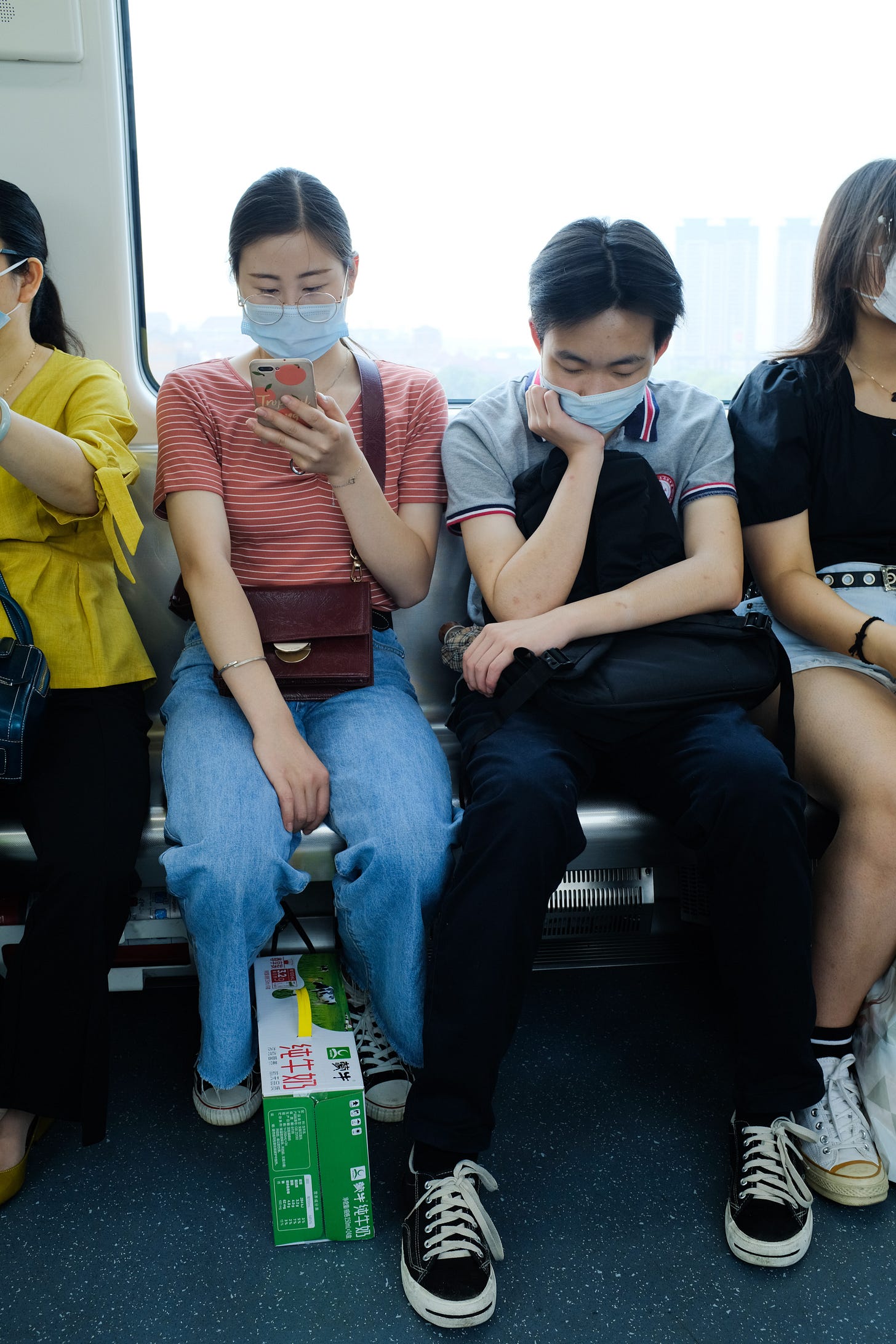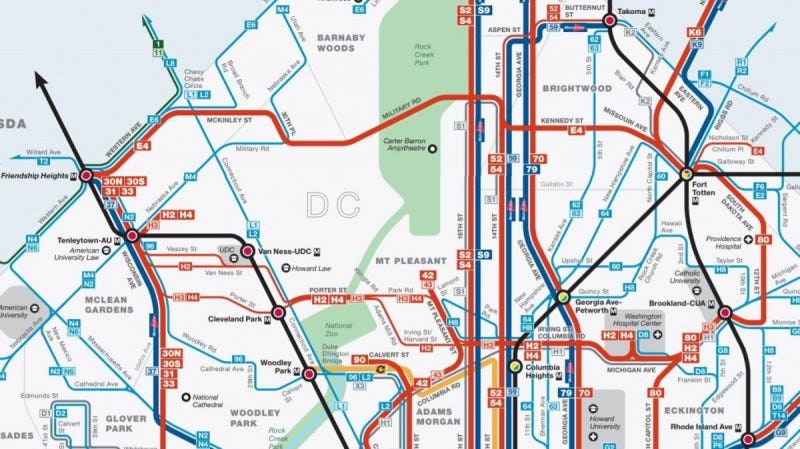MetroNow Dispatch 9.2020
Working together we can help preserve transit funding, support transportation's role in economic recovery, and enhance access to opportunity for everyone in our region.
This month the MetroNow Dispatch thanks our transit employees, explores the transit funding cliff and discusses new research on COVID transmission risk on transit. September will be a defining month for transit’s future.
Snapshot: The Transit Funding Cliff

Photo by David Sanchez on Unsplash
The pandemic has aimed a spotlight on the importance of transit. Transit is a lifeline for essential workers and critical to our economic health and well-being, and even more so during this pandemic and throughout our recovery. The CARES Act, passed in March of this year, provided a stop gap to help transit agencies survive dramatic losses in revenue streams, ridership, and fund enhanced cleaning protocols, but the funding is running out. As service returns to pre-COVID levels to allow for adequate social distancing, ridership remains depressed.
Transit agencies across the country that depend heavily on jurisdictional subsidies and farebox revenues are facing funding cliffs. Unless Congress provides additional aid for transit and state and local budgets before the end of the year, transit agencies will need to make tough decisions about staff reductions, project delays, and service cuts. Maryland’s Transit Administration proposed the elimination of 25 local bus routes and seven MARC trains in response to COVID-19 revenue impacts. This week WMATA’s board discussed similar cuts that could go in effect mid-December anticipating the lack of federal aid. WMATA’s proposed cuts will reduce Metrorail frequencies, shorten hours of operation on weekdays, restore bus fares sometime between January and March 2021, and retain the August bus service plan.
Cuts to transit service will harm the region and make the economic recovery more challenging. If Congress doesn't act this month to fund $32 billion in emergency funding to support transit’s essential role in creating access to opportunity, we will be faced with painful decisions about the future of transit service in the region.
Read more:
Metro is struggling to restart — and survive (Washington Post 8.26) “Officials say the agency, with an annual operating budget of $2.1 billion but with passenger revenue badly depleted, has been losing $2 million per weekday. Until now, that shortfall has been covered by funds from the federal pandemic rescue passed in the spring, from which transit systems nationwide were thrown a lifeline. But with the federal funds running out and negotiations stalled in Congress on a new relief package, Metro’s prospects are grim.”
‘We’re Desperate’: Transit Cuts Felt Deepest in Low-Income Areas (The New York Times 8.15) “But as service cuts to the United States’ bus, rail and subway systems start to happen, experts say it is the nation’s low-income residents, people of color and essential workers bearing the brunt.”
Covid Flight From Transit Forces Shift to Riders Without Choices (Bloomberg 8.17) “Even before the pandemic, U.S. transit agencies typically couldn’t survive on fares alone. They relied on a combination of local, state, and federal subsidies to operate and make upgrades. Federal dollars made up less than 8% of public transportation agencies’ operating budgets and about 35% of capital funds in 2018, the Federal Transit Administration reported.”
Transit Champion of the Month: Our Transit Employees

Image by WMATA.
Throughout the pandemic, the region’s bus drivers, rail conductors, maintenance workers, cleaning crews, and all of our transit agencies’ employees have worked hard to keep all of us safe. Thank you. Without you, we cannot keep our communities healthy and connected in these challenging times. We mourn the loss of the first COVID related death at WMATA the other week, and send our condolences to the WMATA family.
Words, however, are not enough. We must take action to ensure we can provide safe working and travel conditions for our transit workforce and riders. The MetroNow Coalition is working to rally Congress to provide emergency funding to all public transit systems nationally.
Please tweet, call your legislator, and tell friends how they can support transit funding from Congress. Give us a retweet, #SaveTransit!
Transit Safety: Calculating Risk

Photo by Zhang Kenny on Unsplash
Living under COVID related restrictions, we are all learning to calculate risk. In the beginning of the lockdown, questions revolved around whether it was safe to go outside or to the grocery store. As more business reopened, we asked whether it was safe to dine outside or gather in small groups. The answers depend on the individual, their risk factors, and the context. Until there is a widely administered vaccine, no one can guarantee safety on transit or any public outing, but we have more information to help individuals calculate their tolerance for risk. Last month we shared how transit agencies have taken unprecedented actions to reduce transmission such as enhanced cleaning protocols and mask requirements. Recent research suggests transit has the proper ventilation, air circulation, and mitigation behaviors in place (such as riders wearing masks and increased cleaning) to maintain a low-risk environment even as ridership capacity increases.
Read more:
Is It Safe Again to Take the Bus or Subway? (WebMD 8.17) “Ventilation can reduce aerosol transmission by circulating air that is replaced with fresh air several times per hour -- and the higher the air exchange rate, the better. The Metro subway system in Washington, D.C., recirculates fresh air 20 times per hour or every 3 minutes, says a WMATA spokesperson, and New York City’s subway system recirculates fresh air 18 times per hour, says the MTA.”
Is It Safe to Ride Public Transit During the Pandemic? (Bloomberg 8.11) “It depends on a variety of factors, but there are ways to minimize risk. The main way that the virus spreads is through droplets people spray when they talk, cough or sneeze. That means the best way to reduce the spread of infection on public transit and elsewhere is to wear and mask and stay 6 feet from others, experts say.”
What Happens to Viral Particles on the Subway (The New York Times 8.10) “The subway’s ventilation system moves air within train cars more efficiently than restaurants, schools and other indoor settings, according to aerosol experts. But it is not a guarantee to protect against the virus.”
The Future of Transit is Now

Photo by Jason Leung on Unsplash
**For the record, MetroNow does not think the DeLorian, or any Single-Occupancy-Vehicle, has a role to play in the future of transit.
Transit agencies may be on life support, waiting for critical funding and ridership to return, but it’s not all doom and gloom. Agencies, researchers, and the public sector are making exciting progress to bring you the future of transit.
SmarTrip, Meet Apple Pay
As of September 1, Riders can add a SmarTrip card to their iPhone or Apple Watch to pay anywhere SmarTrip is accepted. WMATA hopes to add Android service later this year. MetroNow encourages WMATA to continue to explore low-income fare options and expand access in neighborhoods for cash purchase of fare passes.
Morgan State University’s Mobility & Equity Research
The Urban Mobility & Equity Center at Morgan State University is researching the effects of COVID-19 on mobility and equity via a survey. All are welcome to participate. The survey link is: https://bit.ly/MSUCovid
All Aboard for Regional Rail
Several once-in-a-generation rail investments are coming down the pipeline that will expand rail capacity to, from, and through Washington. The Final Environmental Impact Station (EIS) was released for the the Long Bridge project, the draft EIS for the Union Station Expansion Project is open for public comment until September 28, and the Greater Washington Partnership launched the Capital Region Rail Vision project to create a regional vision for a world-class commuter rail system within 25 years.
“The Long Bridge Project is helping us build not just a more connected region, but a greener and more sustainable region,”— DC Mayor Muriel Bowser
Next Stop: Bus Network Redesign

This clipping from WMATA’s D.C. bus map shows the limited east-west connections north of downtown. Image by WMATA.
Keep your eyes out for a special edition MetroNow Dispatch exploring why now is the time to build a more equitable, efficient, and economically critical bus network, and why now is the time to start work on a regional Bus Network Redesign.
Subscribe + Share
Sharing is caring! Share the MetroNow Dispatch with any friends, colleagues, or family members who want to join us for the ride!
Follow @MetroNow on Twitter for regular tidbits of transit gold.
Reach out to us directly with any feedback, hot takes, or ideas for future newsletter topics: info@metronow.com



